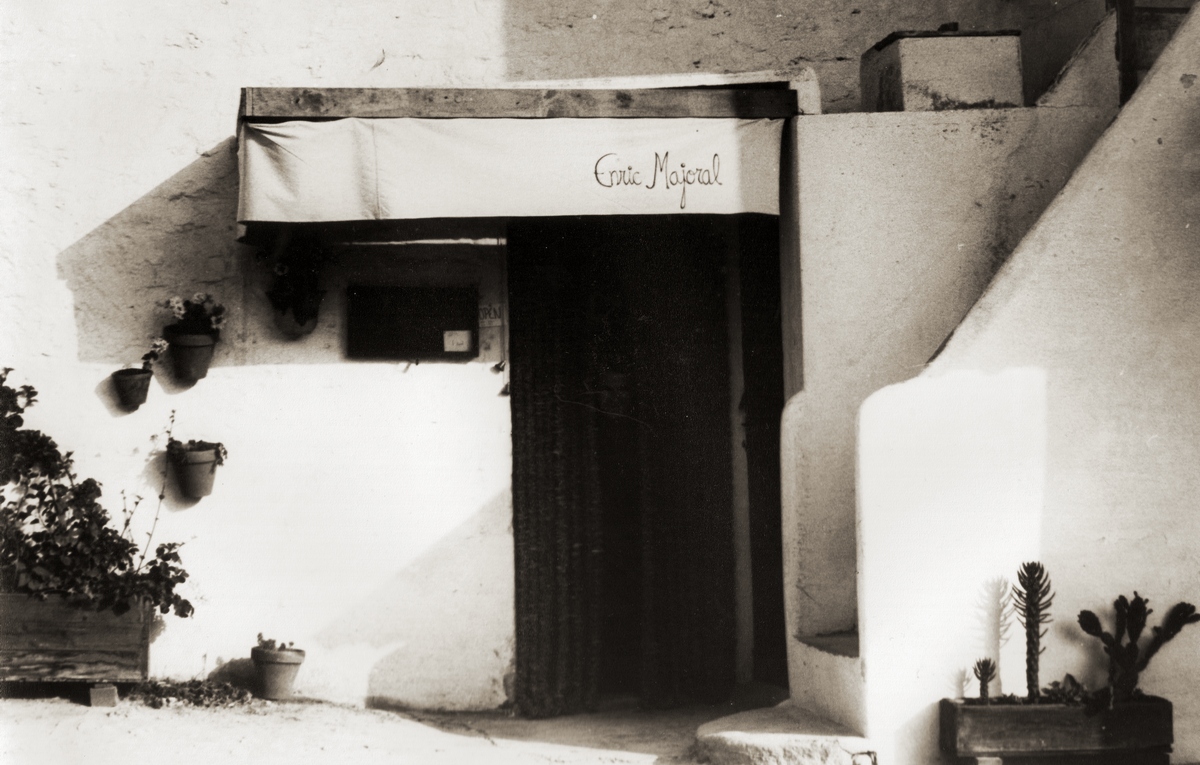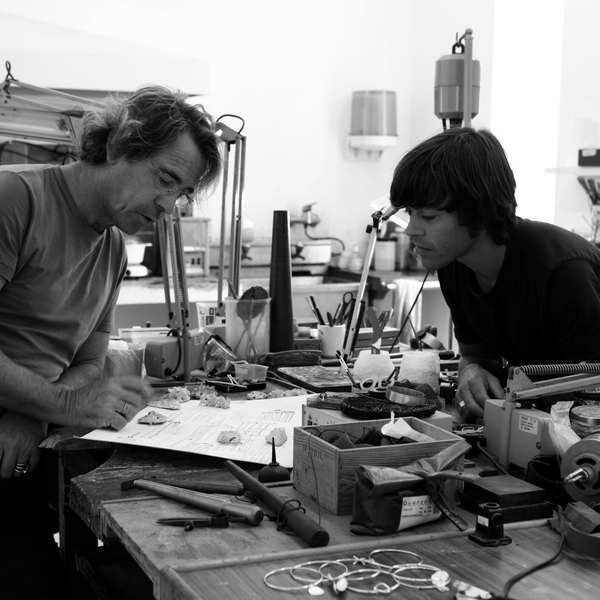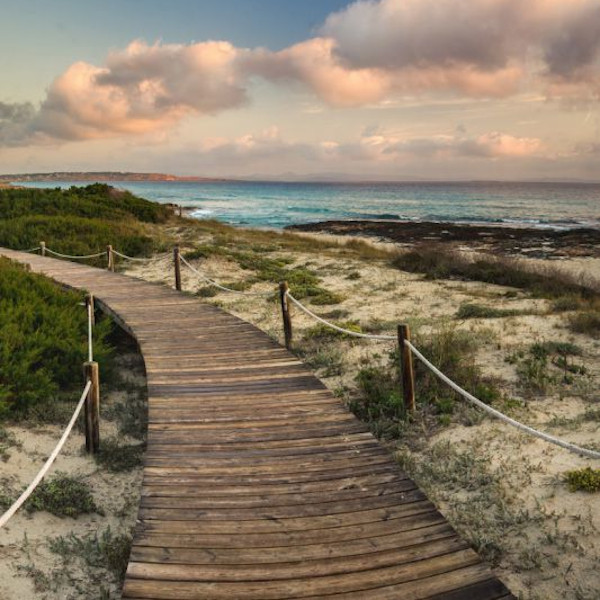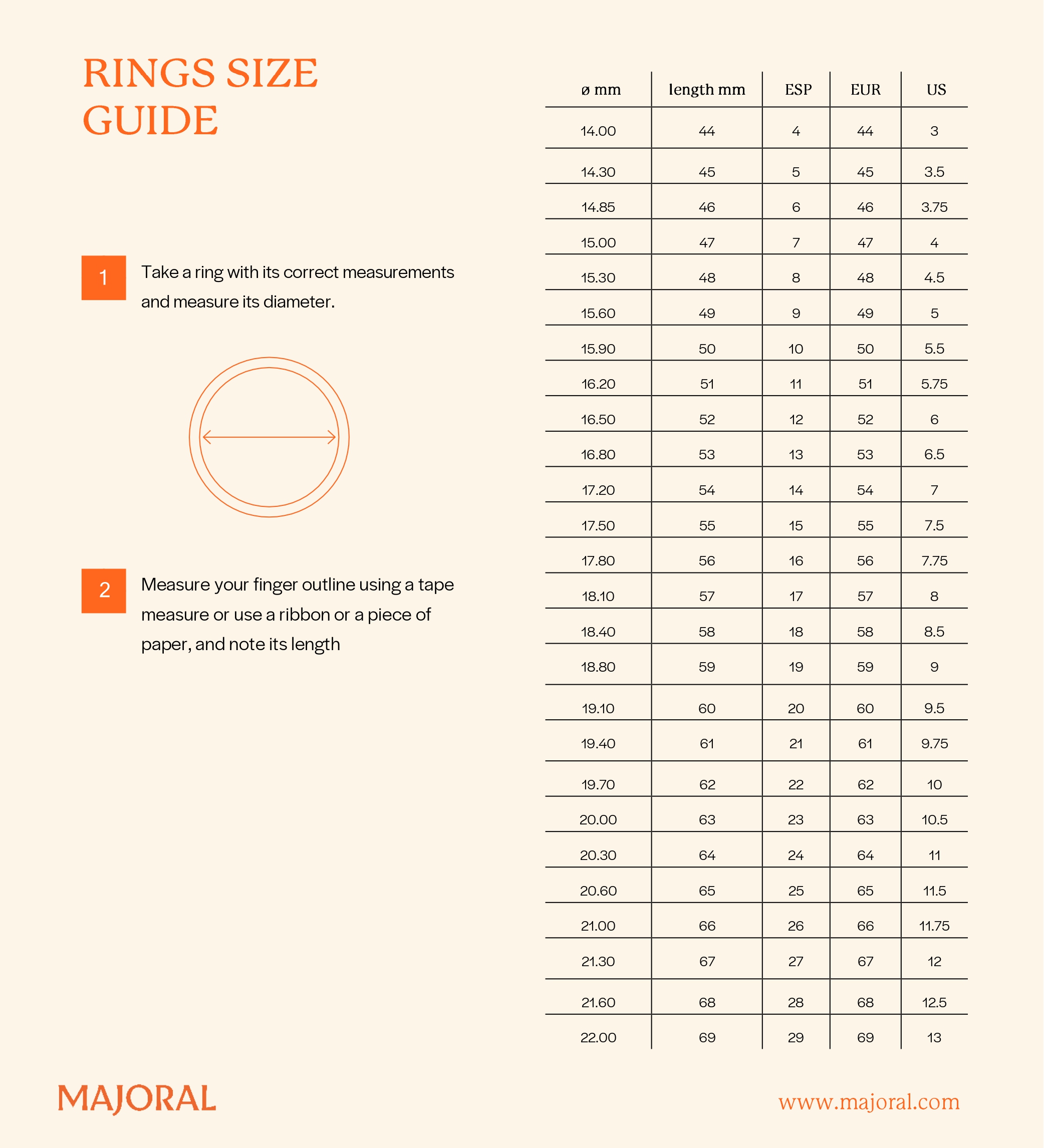The splendour of Formentera captivated Enric Majoral and Dolors Ballester when they arrived on the island in the 70s. They discovered a space in which to build a different life from that which the world imposed on them.
With a surface area of just over 83 square kilometres, the island of Formentera stands out in the Mediterranean landscape as a paradise where nature shows itself in all its beauty. Despite its small size, the island of Formentera has been an enclave in the history of humanity since 3000 BC. The remains in Sa Cova des Fum are testimony to the history of the island, located on the cliffs of La Mola, already inhabited in the Bronze Age. The Pitiusas Islands absorbed the influences of Phoenician, Carthaginian, Roman and Arab cultures that populated them without sullying their wild landscape.
Enric Majoral explains that on arriving at the island, “If you listened carefully to the sounds of the air you could sense the voices of the Phoenicians and Romans. This defines the grand silence that enveloped us, it was so immense, that you could really imagine and feel what you wanted”.
Formentera in the 1970s: a mythical place
In the early 1970s the island of Formentera had little more than 3,000 inhabitants. Many of the archetypal elements of the Mediterranean culture and landscape had remained conserved from all contamination so its inhabitants lived a simple life, in direct contact with nature.
This way of life and the pure beauty of its landscapes attracted young people, who inspired by the values of the hippy movement, wanted to reinvent a way of life free of complexes. It was precisely in this context in which Enric Majoral and Dolors Ballester landed on the island.
LFar from the centres of political power, the island was able to take in artisans, artists and creators who arrived on the island to settle. Novelty coexisted with the relaxed lifestyle that still characterises the island of Formentera. “It was love at first sight. In Formentera I found a magical place, where I felt comfortable and which encouraged me to create the lifestyle I really wanted”, confirms Enric Majoral.
The silence of the island
Life in Formentera in the seventies was, above all, simple and austere.“We settled in a small house without running water or electricity, and it was the perfect place for creating our family”, says Enric.
The mysticism of the island, still present today, not only enabled Enric and Dolors to find in Formentera a place to have the life they wanted, but it was also the setting that provided the development of their artistic identity. “In the seventies, in Formentera there was a spectacular silence that let your imagination fly free”, states Enric Majoral. Its unspoilt beaches, the symbiosis between nature, culture and the people of Formentera, and the slow and calm lifestyle were captivating..
The early days of Enric Majoral were self-taught, fusing intuition and skill to create a shared language by means of jewellery. The island of Formentera is always present in Majoral’s jewellery, as nature and its character permeate creations made unique by their minimalist timelessness.
La Mola: space of creation and meeting
AIn the mid-80s, the town of Pilar de La Mola was already a cultural space where artisans, architects, artists and designers lived, dedicated to connecting with other ways of doing and understanding their creative work.
With the desire of generating a space of communication and exchange, in 1984 the La Mola market was founded, an art and crafts fair that also functioned as a meeting point for the members of that disperse community. Enric Majoral was one of its instigators.
AYears later, in 1998, close to the by then historic art and crafts fair, Majoral opened a singular space that joined the jewellery workshop and an exhibition and sales space. A shop-studio that has become one of the cultural references of the island.
“Formentera is still unspoilt in many aspects”, explains Enric. Majoral remains loyal to the setting of its origins, Formentera is not only its source of inspiration, but also a space of reconstruction and regeneration, of renewal of energies.






